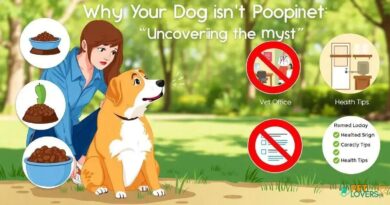What is: At-home dog grooming
What is At-home Dog Grooming?
At-home dog grooming refers to the practice of maintaining your dog’s hygiene and appearance in the comfort of your own home. This process includes various grooming tasks such as bathing, brushing, nail trimming, and ear cleaning. Many dog owners opt for at-home grooming to save money, ensure their pets are comfortable, and create a bonding experience between them and their furry friends.
The Benefits of At-home Dog Grooming
One of the primary benefits of at-home dog grooming is the cost savings compared to professional grooming services. Regular grooming at home can help prevent matting, reduce shedding, and keep your dog’s coat healthy. Additionally, it allows you to monitor your dog’s skin and coat for any signs of issues, such as parasites or infections, which can be addressed promptly.
Essential Tools for At-home Dog Grooming
To effectively groom your dog at home, you’ll need a few essential tools. These typically include a high-quality dog brush suitable for your dog’s coat type, dog shampoo, a pair of nail clippers, and ear cleaning solution. Depending on your dog’s grooming needs, you might also consider investing in a grooming table or a non-slip mat to make the process easier and more comfortable for both you and your pet.
How to Bathe Your Dog at Home
Bathing your dog at home is a crucial aspect of at-home grooming. Start by brushing your dog’s coat to remove any loose hair and tangles. Use lukewarm water and a dog-specific shampoo to wash your dog, ensuring you avoid their eyes and ears. Rinse thoroughly to remove all shampoo residue, as leftover product can irritate your dog’s skin. After bathing, dry your dog with a towel or a pet-safe blow dryer set on low.
Brushing Techniques for Different Coat Types
Different dog breeds have varying coat types, which require specific brushing techniques. For example, short-haired dogs may only need a rubber grooming mitt to remove loose hair, while long-haired breeds require a slicker brush to prevent matting. Regular brushing not only keeps your dog’s coat looking its best but also helps distribute natural oils, promoting a healthy shine.
Nail Trimming Tips for Your Dog
Nail trimming is an essential part of at-home dog grooming that many pet owners find daunting. To make the process easier, use a sharp pair of dog nail clippers and have treats on hand to reward your dog for good behavior. Trim only the tip of the nail to avoid cutting into the quick, which can cause bleeding and pain. If you’re unsure, consult your veterinarian for guidance on how to trim your dog’s nails safely.
Cleaning Your Dog’s Ears at Home
Ear cleaning is another important aspect of at-home dog grooming. Use a vet-recommended ear cleaning solution and cotton balls to gently clean your dog’s ears. Avoid using cotton swabs, as they can push debris further into the ear canal. Regular ear cleaning helps prevent infections and keeps your dog’s ears healthy, especially for breeds prone to ear issues.
Creating a Comfortable Grooming Environment
To make at-home dog grooming a positive experience, create a comfortable environment for your pet. Choose a quiet space free from distractions, and consider using treats and praise to encourage your dog during the grooming process. A calm atmosphere will help your dog feel more relaxed, making it easier for you to complete the grooming tasks.
Common Mistakes to Avoid in At-home Dog Grooming
While at-home dog grooming can be rewarding, there are common mistakes to avoid. One of the biggest pitfalls is over-bathing, which can strip your dog’s coat of natural oils and lead to skin issues. Additionally, neglecting to brush your dog’s coat regularly can result in painful mats. Always take your time and be gentle to ensure a positive grooming experience for your dog.
When to Seek Professional Help
While at-home dog grooming is beneficial, there are times when professional help is necessary. If your dog has a particularly matted coat, requires specialized grooming techniques, or shows signs of distress during grooming, it’s best to consult a professional groomer. They have the expertise and tools to handle challenging grooming situations safely and effectively.




